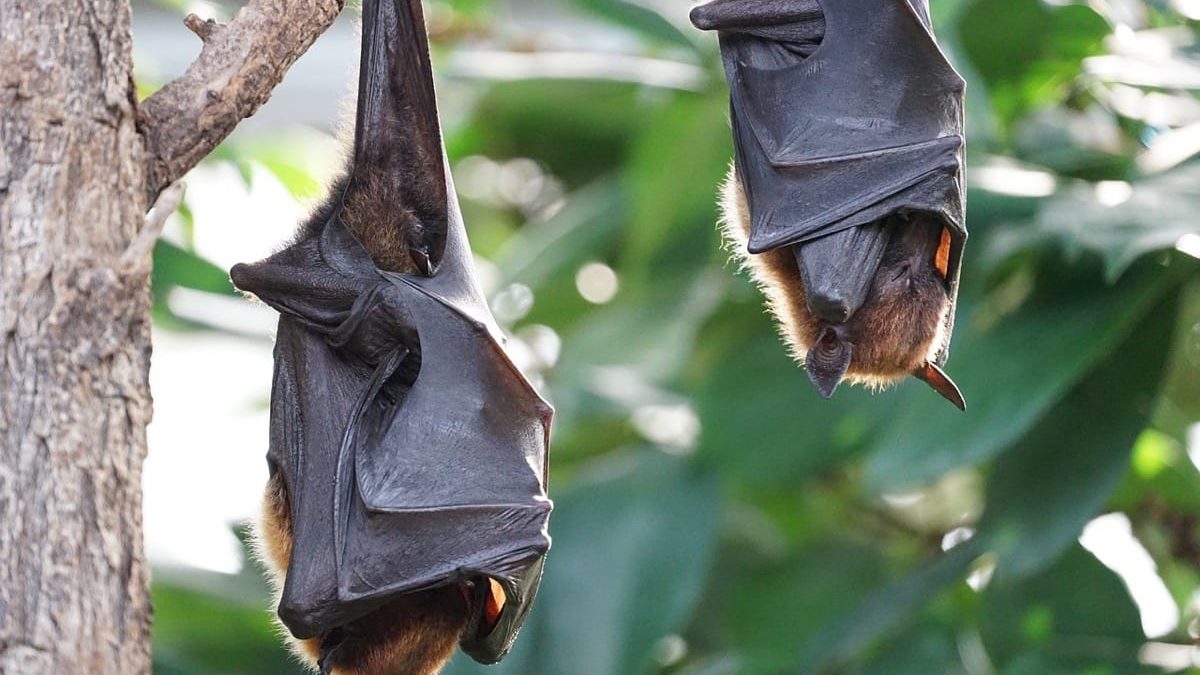
Where Do Bats Sleep?
Bats, those winged wonders of the night, paint the darkness with their acrobatic flights. But when the moon hides and the owls hoot, where do these aerial acrobats catch their Zzz’s? Their nighttime napping habits are just as diverse and fascinating as their aerial talents. So, grab your flashlight and join us on an exploration of batty bedtimes!
Where Do Bats Sleep at Night?
No comfy mattresses or fluffy pillows for these nocturnal ninjas. Bats, depending on their species, choose from an array of cozy, dark hideouts:
1. Cave Cravings: Caves, with their cool temperatures and hidden nooks, are a popular hangout for many bat species. They provide shelter from predators and offer optimal conditions for social roosting, where hundreds or even thousands of bats can snuggle together for warmth.
2. Treetop Retreats: Not all bats crave caverns. Many tree-dwelling species, like little brown bats and eastern red bats, find snug homes in hollow trunks, branches, and even abandoned birdhouses. These leafy hideouts offer protection from the elements and sneaky owls.
3. Building Bonanzas: Humans aren’t the only ones who appreciate a good roof over their heads. Attic spaces, barns, and even old chimneys become cozy roosts for some bat species, like big brown bats and tricolored bats. The warmth and seclusion these structures provide make them ideal snooze spots.
Winter Wonderlands: Bat Hibernation
When winter’s icy grip tightens, bats don’t simply cuddle up for a long nap. They enter a state of torpor, a type of hibernation that slows down their metabolism and heart rate to conserve energy. Here’s how they handle the cold:
- Cave Clusters: Many cave-dwelling bats huddle together in large clusters during hibernation, generating warmth and sharing body heat. This communal snuggling helps them survive the coldest months.
- Treetop Torpor: Tree-dwelling bats find sheltered nooks deep within tree cavities or behind bark, where they lower their body temperature and enter a deep sleep, minimizing energy expenditure.
- Basement Buddies: Some bat species, like the eastern pipistrelle, even venture into human habitats and hibernate in basements or crawl spaces, taking advantage of the relatively stable temperatures offered by our dwellings.
Summer Slumbers: Batting in the Sun
With summer’s warmth, bats loosen up their sleep routine. They might nap in their chosen shelters during the hottest part of the day, but as dusk approaches, their napping patterns change:
- Shady Snoozes: Tree-dwelling bats often shift their roosting spots to find cooler, shadier locations within their usual haunts, escaping the scorching sun while enjoying a gentle breeze.
- Cliffside Chill: Some desert-dwelling bat species, like the Mexican free-tailed bat, roost in large colonies on the cool undersides of cliffs and rock faces, seeking refuge from the sweltering desert heat.
- Foliage Fans: Many bat species utilize large leaves as sunshades, hanging beneath them during the day to stay cool and comfortable. It’s like their own personal bat-sized umbrellas!
Bat Sleeping Habits
Beyond their chosen snooze spots, bats exhibit unique sleep patterns that set them apart from us land dwellers. Here’s a peek into their slumbering secrets:
- Power Naps: Bats are masters of the power nap, catching short bursts of sleep (around 15-30 minutes) throughout the day and night. This allows them to stay alert for predators and optimize their energy for hunting and socializing.
- Unihemispheric Sleep: Talk about multitasking! Bats can actually sleep with one half of their brain at a time, keeping the other half alert for danger. This “unihemispheric sleep” allows them to stay partially aware of their surroundings, even while snoozing.
- Upside-Down Slumbers: Most bats hang upside down while sleeping, utilizing specialized hooks in their feet to grip tight. This posture not only conserves energy but also allows them to launch into flight quickly if disturbed.
Sealing the Deal on Bat Sleep
The next time you hear the flutter of wings in the night, remember the fascinating world of sleep that unfolds for these flying marvels. From cozy cave clusters to shady leaf hammocks, bats have mastered the art of catching their Zzz’s wherever they roam. So, the next time you yawn and head for your bed, spare a thought for these winged sleepers, the champions of batty slumbers!



